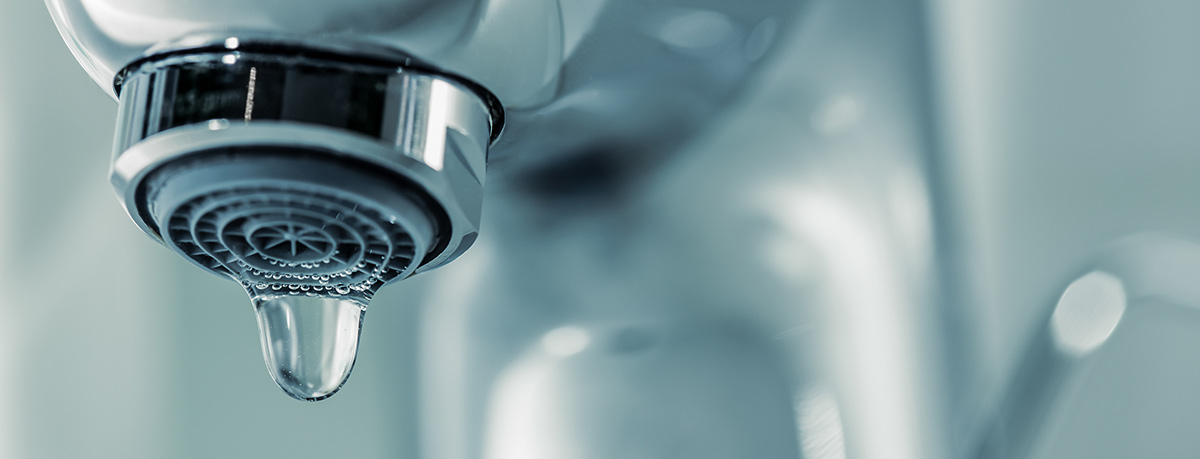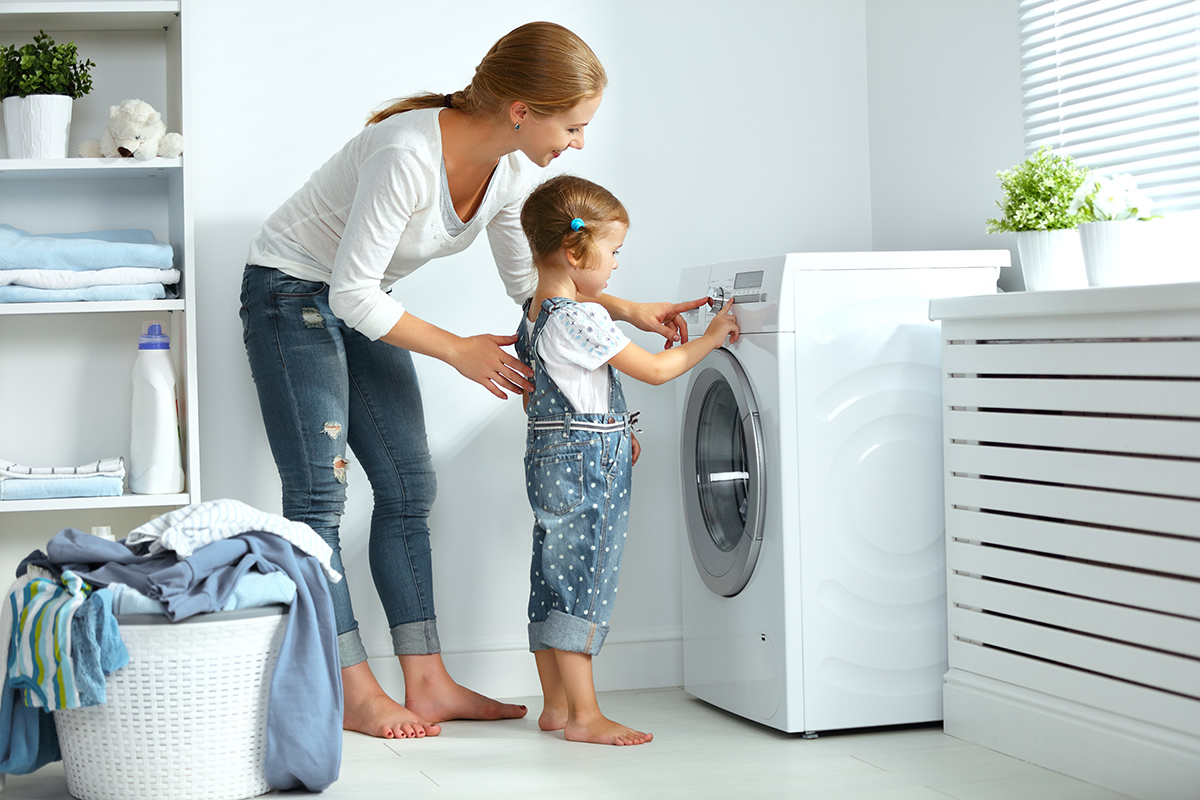There are lots of valid reasons to use our finite water resources more efficiently…here are just a few. Our population is growing…and growing… and growing. That means more homes and more paved areas, which means that stormwater runs off instead of seeping into the ground to help recharge our aquifers. The more water we pump from the ground, the greater the strain we place on our aquifers.
The days of cheap and plentiful water are history. So, if you’re going to make the commitment to changing your wasteful water use habits, what steps will save you the most water…and therefore the most money? Here’s what the experts suggest.

Inside the house
1. STOP THOSE LEAKS!
Routinely check for leaks…leaking faucets, leaking toilets, leaking appliances. Watch your water bill…suspect a leak if you have any sudden increase in usage without changing your usual patterns. Studies have shown that the single greatest water waster in the home is a leaking TOILET…a leak of one gallon every six minutes — not an unusual amount— adds up to ten gallons an hour, or 240 gallons per day! A leaking toilet can double the total monthly water usage by the whole household. Most toilet leaks involve poorly seated tank balls, worn valves, or other minor components that are relatively easy to fix. Unfortunately, many toilets are silent while flushing your dollars down the drain…so check all the toilets for leaks regularly!
2. IN THE BATHROOM
While we’re on the subject of toilets…if yours are more than 15 years old, replace those water-guzzling 5-7 gallon a flush toilets with the now-mandated 1.6 gallon per flush models. You can check the date stamp inside the toilet tank for the make, model and date of manufacture. If it is before 1992, replace it…you’ll start to see the payback on the first water bill.
Next, consider the family’s shower use. Do you have water-saving — or flow restricting – shower heads? Replacing old ones can save 500 to 800 gallons a month. And, even a one or two minute reduction in shower time can save up to 700 gallons a month. Multiply that by the number of people in your household and now we’re talking about some substantial water savings! Something as minor as turning off the water while you brush your teeth can save another three gallons a day. Here’s a cool tip — while you are waiting for the water to get hot, capture some of that water in a plastic container and use it to water plants or for pets.

3. IN THE KITCHEN AND LAUNDRY
Here’s where you’ll find some more thirsty appliances. Again, depending on the age of these workhorses, significant savings in water, money, and energy usage are likely if you replace them. The washing machine, for example, is the second largest water user in your home, accounting for as much as 22 percent of the total residential water use.. Today, there is a good variety of high-efficiency (HE) clothes washers on the market that require only 27 gallons or less per load. If you combine the conserving technology with efficient use practices – running only with full loads, selecting minimum volume settings and shorter wash cycles — even more savings are possible.
In the kitchen, today’s newer, more efficient dishwashers use only half of what the earlier models did…about 7 gallons per load. Avoiding waste is the key here…use with full loads only; minimize pre-washing by scraping off food using a utensil not water; make sure dishes are positioned to get good water flow during the cycle; and select the shortest practical cycle. Garbage disposals use a surprisingly large amount of water as they grind solid food waste into small particles that water washes down the drain. Consider composting your food scraps…this saves water twice — in the kitchen and in the final organic product which reduces the need for water for your plants.
Outside the house
4. LANDSCAPE DESIGN AND PLANT SELECTION
Now we’re talking some serious water and money savings opportunities. Excessive irrigation not only increases water costs, but it drains our water supply sources, adds to pollution with runoff of fertilizers and other chemicals, and demands a significant amount of our time and resources for maintenance. Americans spend more than $750 million each year on residential turf grass…and another $25 billion for mowers, hoses, clippers, and gardening tools. The amount of lawn fertilizers — chemicals — applied by homeowners on these lawns and landscapes is nearly 10 times the amount of pesticides (per acres of turf) than farmers use on crops!
Let’s start with design. A residential yard with a water-wise design can be just as attractive, lush and colorful as what is thought of as a ‘traditional’ landscaped area. Think outside the box. The largest water savings to be achieved through water-wise landscapes are accomplished by reducing turf areas— especially if the grass variety is especially thirsty, like St. Augustine.
The concept of “Xeriscape” or water-wise designs is often misunderstood. These are NOT just recreations of desert environments using rocks and cactus; these principles utilize native and adaptive plants from the area in which they are created. Using native and low-water-use plants and grasses is the key to controlling irrigation demand.
Experts say that “native plants” have three distinguishing characteristics: 1. It ‘arrived’ by means of water, wind, the fur of a migrating animal, or by bird or animal droppings; 2. The plant evolved over a long period of time and now thrives; and 3. It has not been ‘tampered with’ by humans. It is the place of origin that determines whether or not it is native to the region. Selecting drought-tolerant or drought-resistant plants is another key strategy to not only reduce the need for supplemental water but to increase their incidence of survival, as well.
Soil quality influences how well plants will survive or thrive, so the first step should be to have the soil analyzed. Select the plants after the soil test is complete to know which are best suited for the soil you have to work with. The use of mulch will help save water by reducing evaporation, cooling the soil, and controlling weeds. Using organic mulch (grass clippings, shredded leaves, wood chips, bark mulches, and pine ‘straw’) and compost in flower beds can significantly reduce the amount of water the plants will need to thrive.
5. IRRIGATION…
Poor irrigation scheduling – Watering too often and for too long — is the number one source of water waste associated with irrigation, followed by poor system design, inefficient equipment, and poor maintenance. Apply water only when and where it is needed. Just because you have a sprinkler system, don’t assume that you are using water efficiently. Even the most elaborate system can waste water because residents either don’t know how or don’t bother to set the frequency and timing controls after the initial settings. Experts suggest that, for proper efficiency, the entire irrigation system controllers be reprogrammed at least monthly to respond to changing rainfall and temperatures. The entire system should be checked for leaks periodically, too. Installing a device that shuts off an automatic irrigation system when it has rained or is raining is a must and can save up to 10 percent of water used outdoors. If you don’t have one, get one.
Find and repair any broken heads, seals or pipes in your irrigation system. Watch the entire cycle to make sure that the water is going where it is needed and that all areas you intend to water are getting wet. Make control modifications as appropriate. If serious water savings interest you, consider replacing a conventional sprinkler system for non-turf areas with a drip-irrigation system — the savings can be as much as 75 percent.
Remember, YOU are the most important water conservation ‘tool’ at your house. Make using water more efficiently a priority!
Written by Barbara Payne